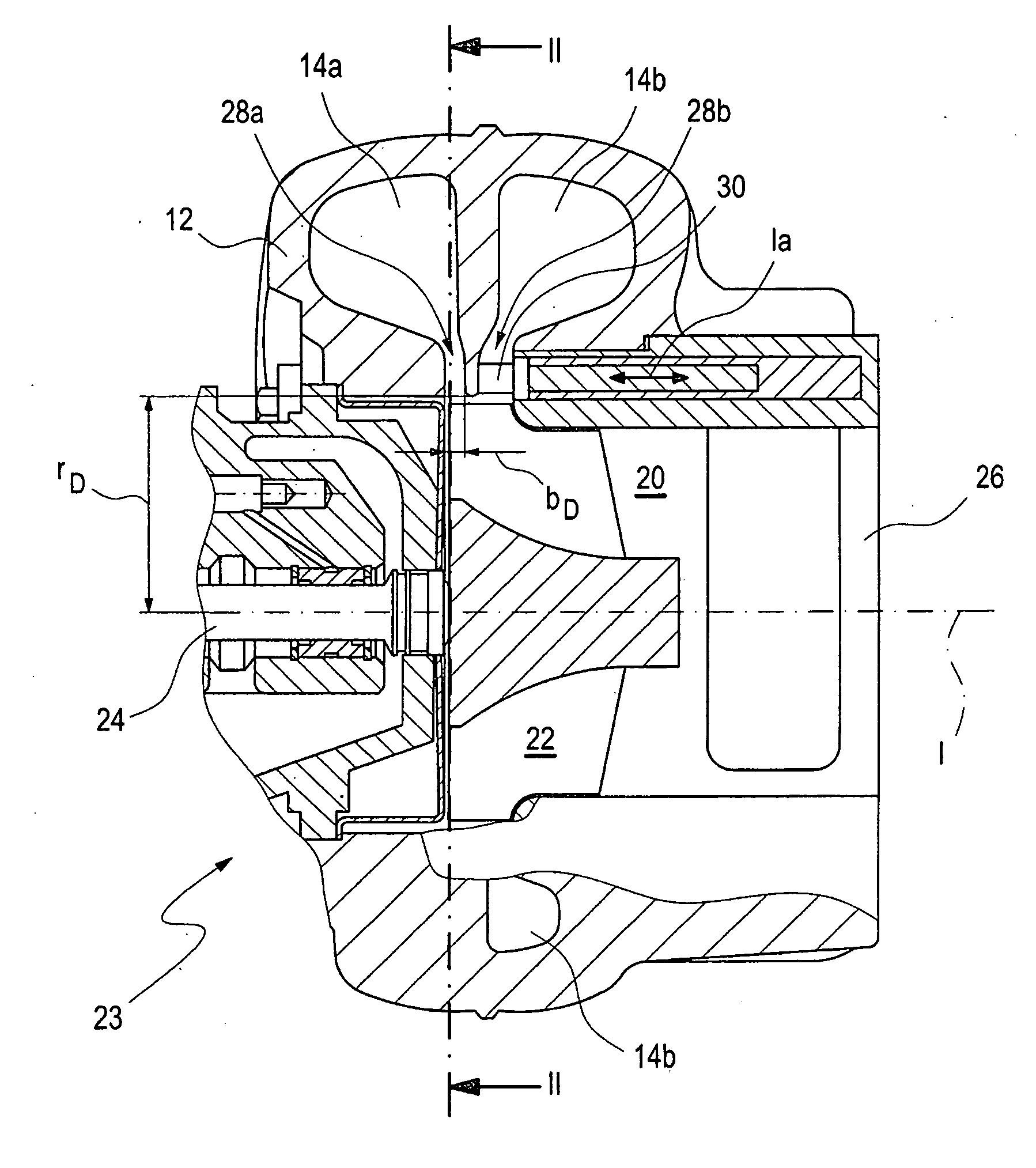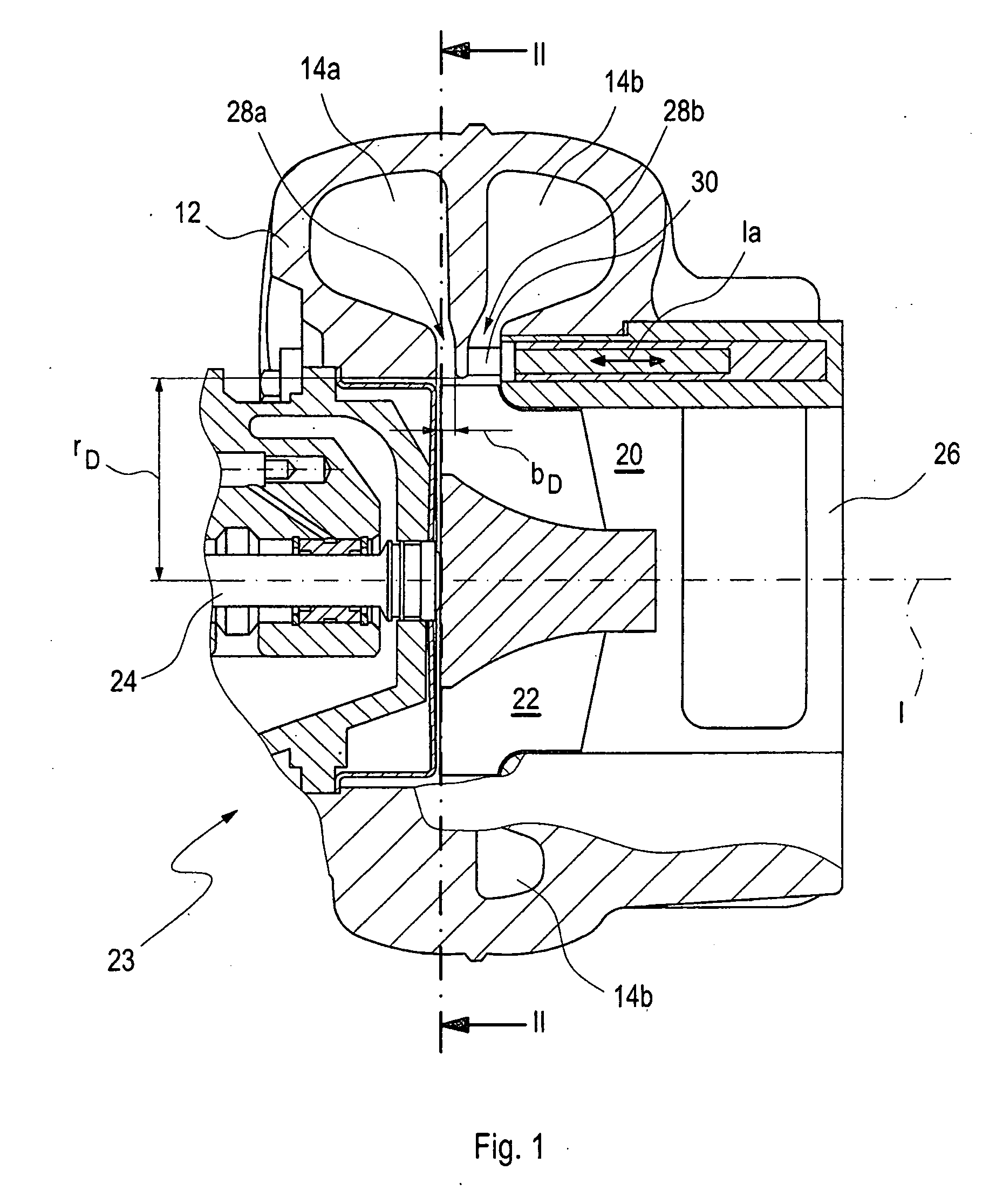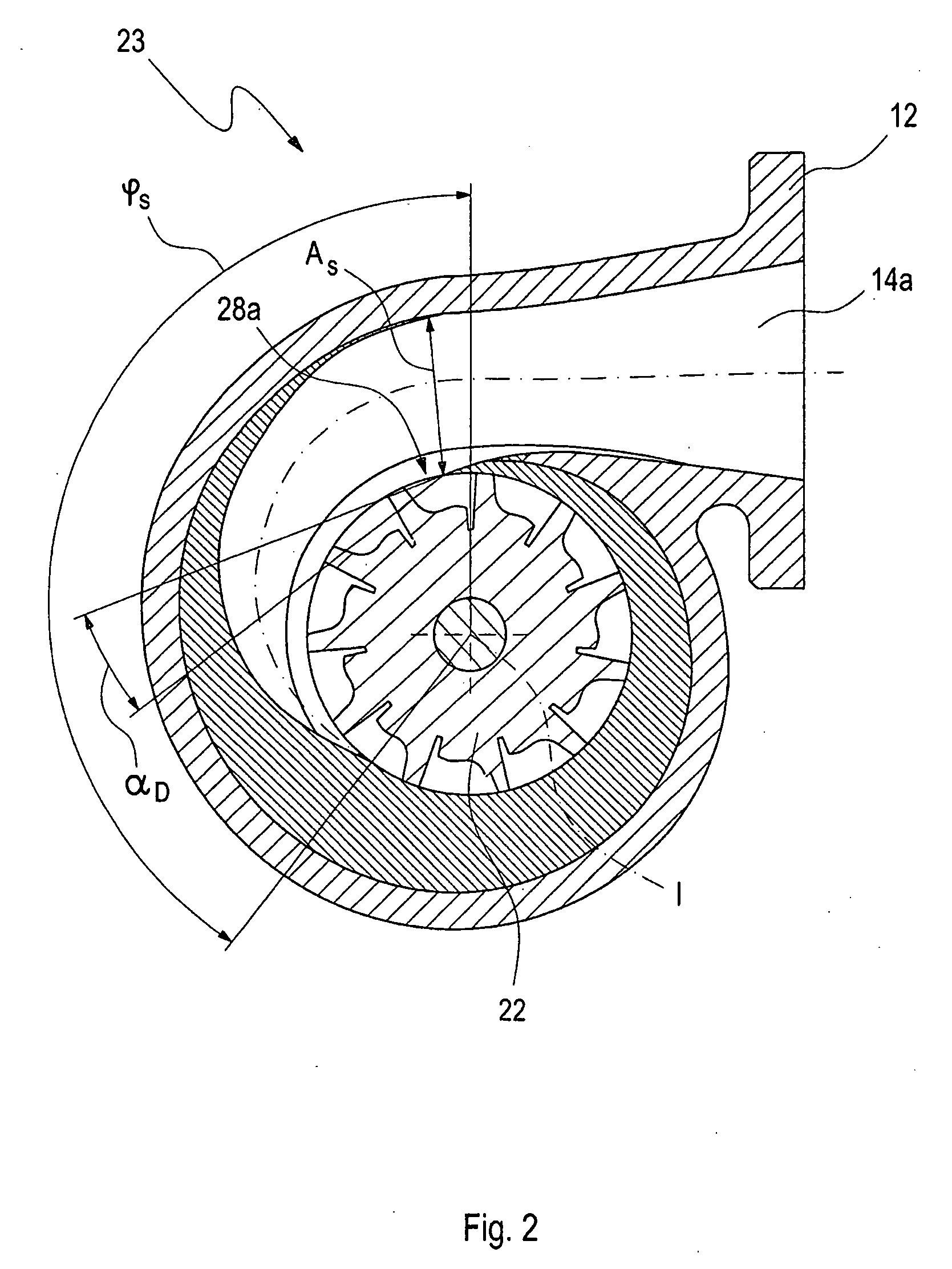Turbocharger for an Internal combustion engine of a motor vehicle and internal combustion engine
a technology of internal combustion engine and turbocharger, which is applied in the direction of combustion engine, engine components, machines/engines, etc., can solve the problems of reducing the efficiency of the turbine, reducing the load and speed range of the internal combustion engine in particular, and reducing the adaptability of the power output, so as to improve efficiency and improve the adaptability of power output. , the effect of being able to vary particularly easily
- Summary
- Abstract
- Description
- Claims
- Application Information
AI Technical Summary
Benefits of technology
Problems solved by technology
Method used
Image
Examples
Embodiment Construction
[0035]FIG. 1 is a cross-sectional view of a turbocharger for an internal combustion engine 10 (see FIG. 5) of a motor vehicle according to a first embodiment. The turbocharger comprises a turbine housing 12 with a first and a second spiral passage 14a, 14b, each of which can be coupled to one of several exhaust gas lines 16a, 16b (see FIG. 5) of an exhaust train 18 of the internal combustion engine 10 and through each of which exhaust gas can flow independently. The turbine housing 12 further comprises a turbine wheel 22 in a rotor chamber 20, to which the exhaust gas of the internal combustion engine 10, which can be guided through the two spiral passages 14a, 14b, can be admitted for driving a compressor impeller 25 of a compressor 27 (see FIG. 5) coupled to the turbine wheel 22 for rotation therewith via a drive shaft 24. In order to improve the efficiency of the internal combustion engine 10 in a wider operating range while keeping manufacturing costs as low as possible, the fir...
PUM
 Login to View More
Login to View More Abstract
Description
Claims
Application Information
 Login to View More
Login to View More - R&D
- Intellectual Property
- Life Sciences
- Materials
- Tech Scout
- Unparalleled Data Quality
- Higher Quality Content
- 60% Fewer Hallucinations
Browse by: Latest US Patents, China's latest patents, Technical Efficacy Thesaurus, Application Domain, Technology Topic, Popular Technical Reports.
© 2025 PatSnap. All rights reserved.Legal|Privacy policy|Modern Slavery Act Transparency Statement|Sitemap|About US| Contact US: help@patsnap.com



